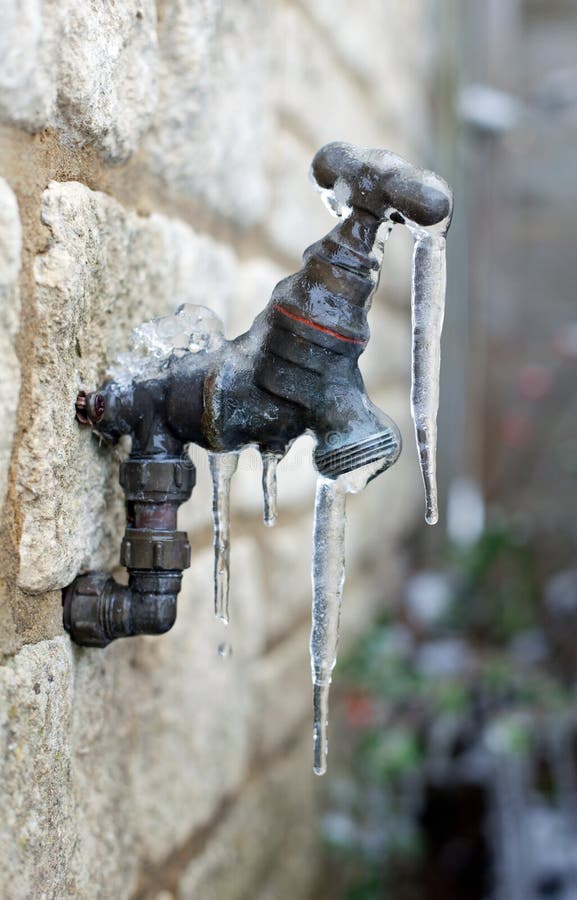Important Advice to Prevent Frozen Plumbing in Cold Weather: Professional Guidance
Important Advice to Prevent Frozen Plumbing in Cold Weather: Professional Guidance
Blog Article
We have discovered the article involving Preventing and dealing with frozen pipes directly below on the net and think it made sense to share it with you in this article.

Winter can wreak havoc on your pipes, particularly by freezing pipes. Right here's just how to prevent it from happening and what to do if it does.
Introduction
As temperature levels decline, the risk of icy pipes rises, potentially leading to expensive repair services and water damage. Recognizing just how to stop frozen pipelines is crucial for house owners in cold environments.
Understanding Icy Pipelines
What creates pipes to ice up?
Pipes ice up when exposed to temperature levels listed below 32 ° F (0 ° C) for expanded durations. As water inside the pipelines ices up, it increases, taxing the pipeline wall surfaces and potentially triggering them to rupture.
Risks and problems
Frozen pipes can bring about water supply interruptions, residential property damages, and costly fixings. Ruptured pipelines can flood homes and create substantial structural damages.
Indications of Frozen Piping
Identifying icy pipelines early can avoid them from rupturing.
Just how to determine icy pipes
Try to find reduced water flow from taps, uncommon odors or sounds from pipelines, and visible frost on revealed pipes.
Avoidance Tips
Shielding susceptible pipes
Cover pipes in insulation sleeves or utilize warm tape to safeguard them from freezing temperatures. Concentrate on pipes in unheated or outside locations of the home.
Home heating strategies
Keep indoor areas sufficiently heated up, specifically areas with plumbing. Open cabinet doors to permit warm air to distribute around pipes under sinks.
Shielding Exterior Plumbing
Garden tubes and exterior faucets
Detach and drain garden hose pipes before winter months. Set up frost-proof spigots or cover outdoor faucets with insulated caps.
What to Do If Your Pipes Freeze
Immediate activities to take
If you believe frozen pipes, keep faucets open up to eliminate stress as the ice thaws. Make use of a hairdryer or towels soaked in warm water to thaw pipelines gradually.
Long-Term Solutions
Architectural modifications
Think about rerouting pipes away from outside wall surfaces or unheated locations. Add extra insulation to attics, cellars, and crawl spaces.
Upgrading insulation
Invest in premium insulation for pipes, attic rooms, and walls. Appropriate insulation aids maintain regular temperatures and minimizes the threat of icy pipelines.
Final thought
Avoiding icy pipelines needs positive actions and quick reactions. By comprehending the causes, signs, and safety nets, home owners can shield their pipes throughout winter.
5 Ways to Prevent Frozen Pipes
Drain Outdoor Faucets and Disconnect Hoses
First, close the shut-off valve that controls the flow of water in the pipe to your outdoor faucet. Then, head outside to disconnect and drain your hose and open the outdoor faucet to allow the water to completely drain out of the line. Turn off the faucet when done. Finally, head back to the shut-off valve and drain the remaining water inside the pipe into a bucket or container. Additionally, if you have a home irrigation system, you should consider hiring an expert to clear the system of water each year.
Insulate Pipes
One of the best and most cost-effective methods for preventing frozen water pipes is to wrap your pipes with insulation. This is especially important for areas in your home that aren’t exposed to heat, such as an attic. We suggest using foam sleeves, which can typically be found at your local hardware store.
Keep Heat Running at 65
Your pipes are located inside your walls, and the temperature there is much colder than the rest of the house. To prevent your pipes from freezing, The Insurance Information Institute suggests that you keep your home heated to at least 65 degrees, even when traveling. You may want to invest in smart devices that can keep an eye on the temperature in your home while you’re away.
Leave Water Dripping
Moving water — even a small trickle — can prevent ice from forming inside your pipes. When freezing temps are imminent, start a drip of water from all faucets that serve exposed pipes. Leaving a few faucets running will also help relieve pressure inside the pipes and help prevent a rupture if the water inside freezes.
Open Cupboard Doors
Warm your kitchen and bathroom pipes by opening cupboards and vanities. You should also leave your interior doors ajar to help warm air circulate evenly throughout your home.

We were shown that report on Prevent Frozen Pipes from a friend on our other blog. Sharing is caring. Helping others is fun. Thank-you for going through it.
Schedule Your Job Now Report this page